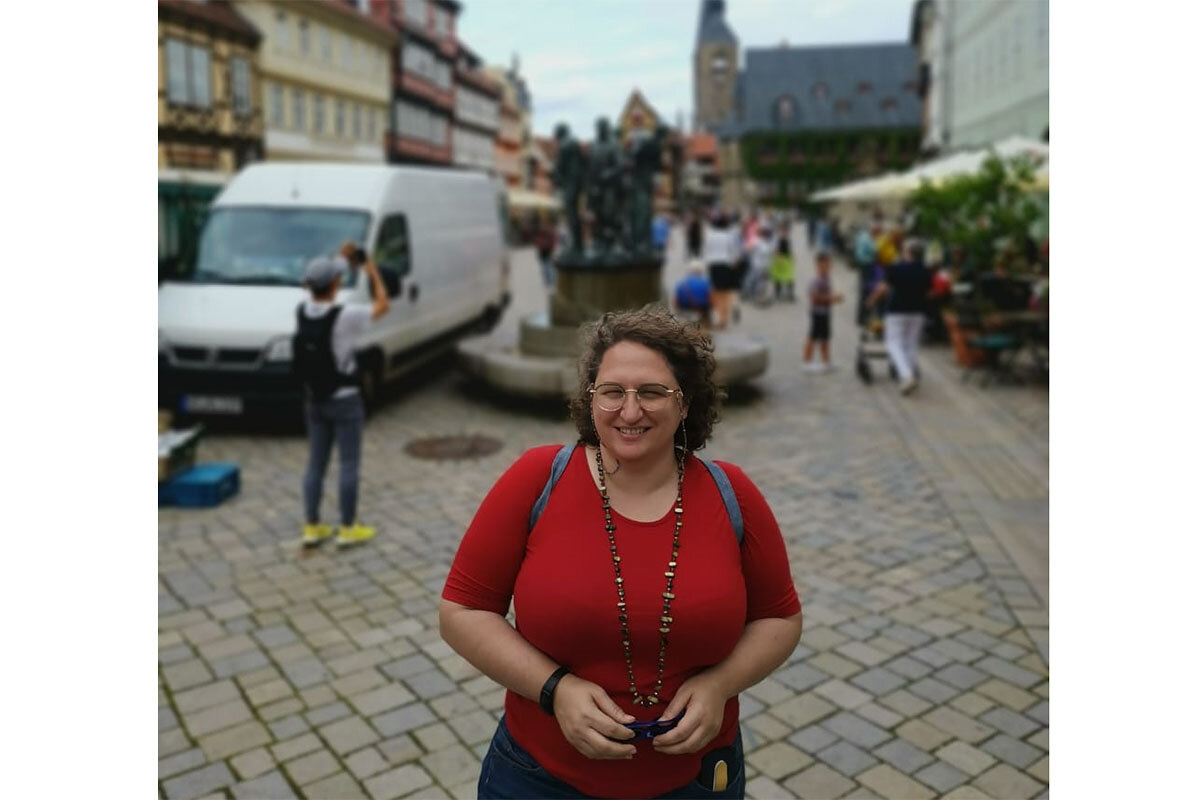Far from being “Black Christmas,” Kwanzaa honors universal ideals
Loading...
Photographer Emiola Omatayo credits her introduction to Kwanzaa in the early 2000s with helping her thrive as a Black woman. She holds ujamaa, the principle of cooperative economics celebrated on the fourth day of Kwanzaa, closest to her heart. Far from a once-a-year holiday consideration, ujamaa helped her develop a financially secure future as a single mom based on knowledge gained from African American financial advisers and other black authors.
As Ms. Omatayo’s experience indicates, Kwanzaa is far more than “Black Christmas,” as it is sometimes called. A cultural holiday, not a religious one, Kwanzaa is observed from Dec. 26 to Jan. 1. The word means “first” and comes from a phrase referring to the first fruits of the harvest. The holiday was created in 1966 by Pan-African scholar and author Maulana Karenga, chair of the Africana Studies Department at California State University, Long Beach. Kwanzaa, which is based on seven principles called the nguzo saba, is designed to empower the Black community and honor traditional African family values.
While Kwanzaa’s unique focus is on the history and culture that bind African people, its message has a universal appeal for all people of good will. “It is rooted in African culture, and we speak as Africans must speak, not just to ourselves, but to the world,” Dr. Karenga says on his Kwanzaa website.
Kwanzaa principles and symbols
Each day during Kwanzaa week, one of seven candles is lit to recognize and spark discussion of that day’s principle. Dr. Karenga defines the principles in the following way:
1. Umoja (unity): To strive for and maintain unity in the family, community, nation, and race
2. Kujichagulia (self-determination): To define ourselves, name ourselves, create for ourselves, and speak for ourselves
3. Ujima (collective work and responsibility): To build and maintain our community together and make our brothers’ and sisters’ problems our problems and to solve them together
4. Ujamaa (cooperative economics): To build and maintain our own stores, shops, and other businesses and to profit from them together
5. Nia (purpose): To make our collective vocation the building and developing of our community in order to restore our people to their traditional greatness
6. Kuumba (creativity): To do always as much as we can, in the way we can, in order to leave our community more beautiful and beneficial than we inherited it
7. Imani (faith): To believe with all our heart in our people, our parents, our teachers, our leaders, and the righteousness and victory of our struggle
Along with the candleholder (kinara) and candles (mishumaa saba), key symbols related to Kwanzaa include a mat (mkeka), display of crops (mazao), corn (muhindi), unity cup (kikombe cha umoja), and gifts (zawadi). (Dr. Karenga’s “Kwanzaa: A Celebration of Family, Community and Culture” and his website explain these symbols’ significance.)
Principles to live by
For Tee Richards, a special education teacher, the first Kwanzaa principle – umoja (unity) – helped her grow into a politically conscious adult. “When I was younger, I thought of Kwanzaa as just a ‘Black holiday,’” she says, laughing. But after witnessing the hostility and attacks directed at the Black community as an adult, she gained a greater appreciation for “the importance of working to maintain unity within the race,” Ms. Richards says. “Last summer when George Floyd was killed by the police, it was unity that brought hundreds of thousands of us into the streets to demand racial justice.”
Jerome Harris, a grandmaster in Kenpo Karate, came of age in the 1960s during the heyday of Kwanzaa. He says imani, or faith (the seventh principle), has been important to his work. “I have taught literally hundreds of children, and I have been blessed to see most grow into strong, productive adults. … It is my job to instill faith in students so they trust me as someone who will righteously guide them,” Grandmaster Harris says.
Kwanzaa is “definitely a celebration designed for African Americans, but that shouldn’t stop others from being aware of its significance,” says Riem Farahat, an American life coach living in Saudi Arabia. Kwanzaa presents an opportunity for growth and self-reflection for all who participate. “My idea this year is to take one principle a day, understand it, and see how it manifests in my life,” she says.
Ms. Omatayo, the photographer, follows a similar approach with the ongoing practice of her favorite Kwanzaa principle, ujamaa (cooperative economics). “I always go out of my way to buy from Black-owned businesses,” she says. “It is my way of uplifting the community.”








